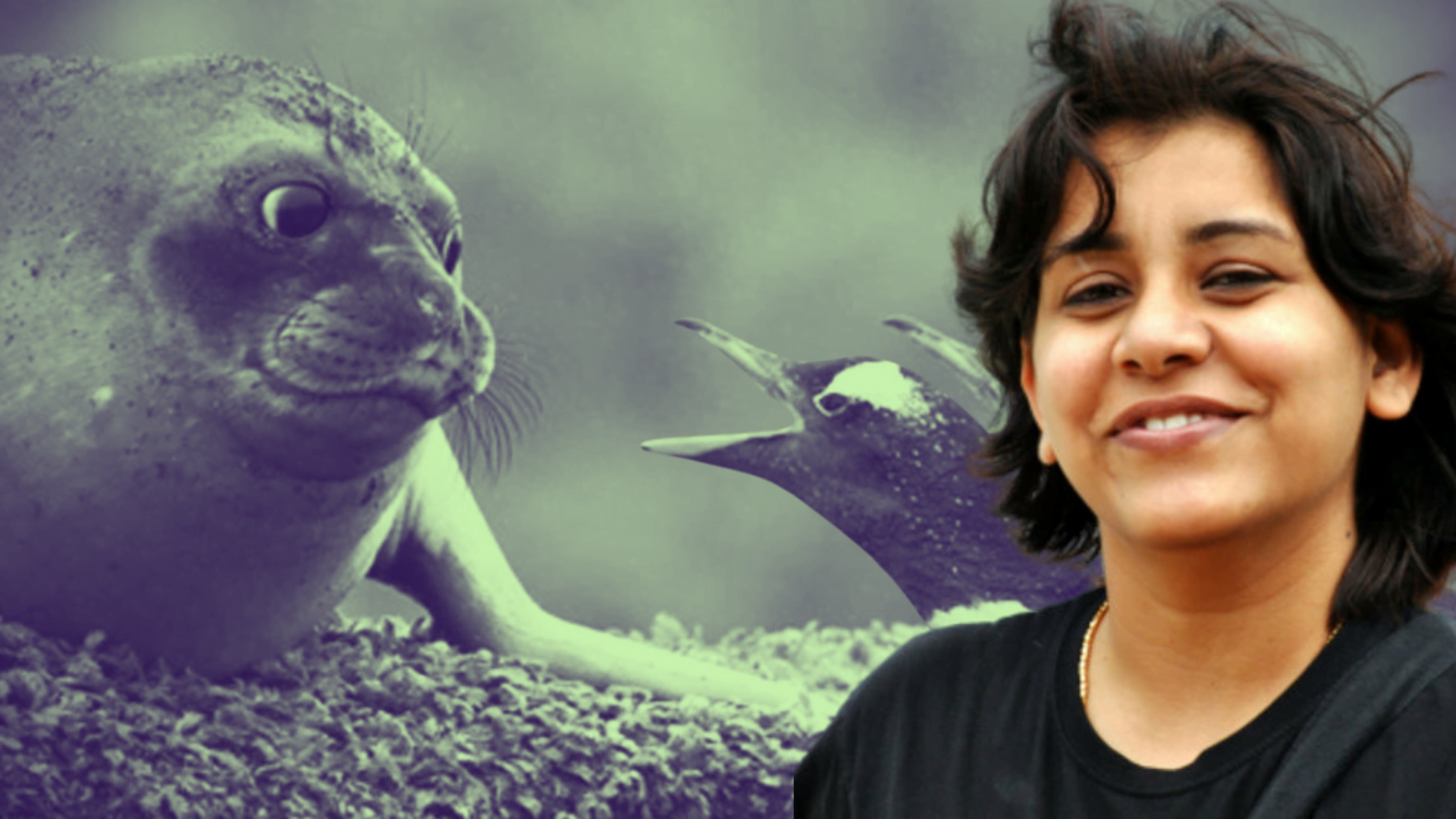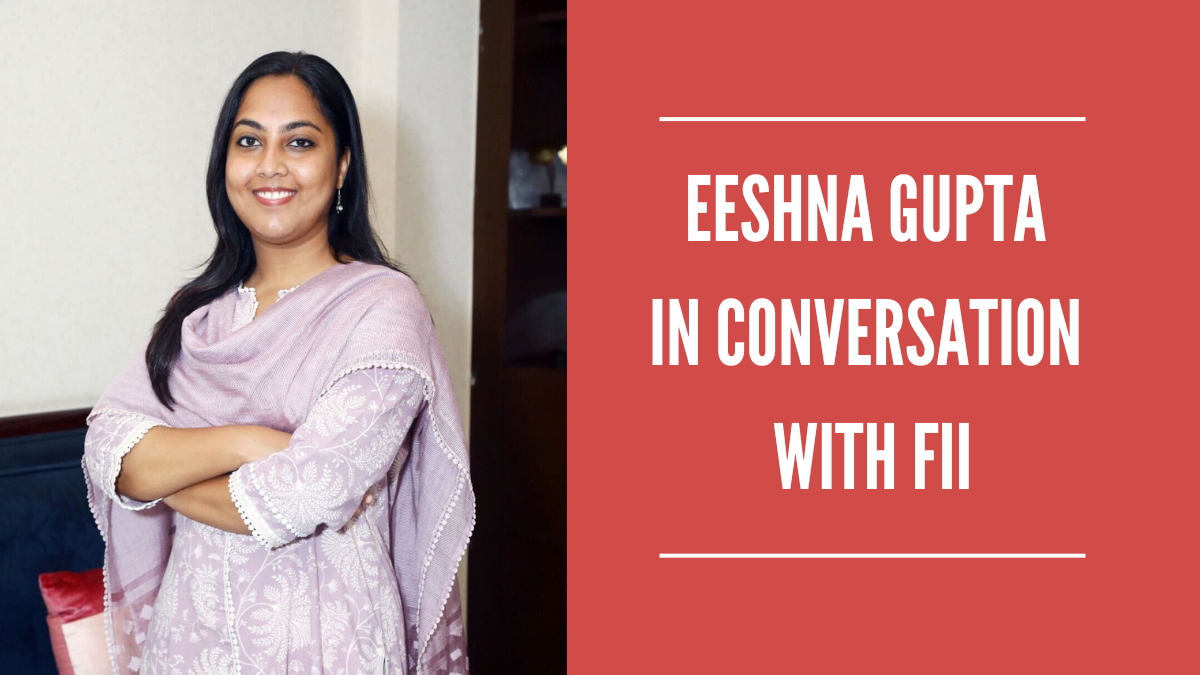Posted by Shreyas Gadge, Vinita Mulay and Achuthan Raja Venkatesh
This series of articles, originally published in Manthan, presents a compilation of interviews of five women academics about the cause of women in STEM and the associated effects that are catapulted by the pandemic.
To have a career in academia, women have always had to face institutionalised challenges to establish themselves. The times are tougher than usual when women academics while playing many different roles – supervisor, educator, researcher, spouse, parent, relative, friend, and others; are taking up extra responsibilities and coping with the work from home conditions due to the pandemic.
This article is in conversation with Dr Manjari Jain, who talks about the need for affirmative action in academia for equal opportunity and representation of women. Dr Manjari Jain is an Associate Professor in the Department of Biological Sciences at IISER Mohali. Her research interests lie in acoustic communication in animals and she is the principal investigator of the Behavioural Ecology Lab.
Dr Manjari Jain is an Associate Professor in the Department of Biological Sciences at IISER Mohali. Her research interests lie in acoustic communication in animals and she is the principal investigator of the Behavioural Ecology Lab.
Also read: Women In STEM: In Conversation With Dr Arunika Mukhopadhaya
How has life in lockdown been for you?
Dr Manjari Jain: Balancing work and caregiving has been a challenge. With a young child around you, working even for an hour becomes a difficult job. Ignoring your child’s need for attention is not possible as a parent. If I am away for work I still feel guilty for being away from my daughter. I keep multiple mental notes of what has to be done. It isn’t all bad though. Since my spouse and I work in two different cities, the lockdown and work-from-home regime allowed us to spend time together as a family for almost an entire year for the first time. It also resulted in childcare duties getting divided between us. This was a huge advantage for me. In fact, he took up much more responsibilities than I did on an average, thereby allowing me to attend to pressing work that needed long stretches of uninterrupted attention. This facilitated the graduation of 6 Master thesis students and the first PhD student from my lab.
As a young mother, what has helped you cope with the pandemic?
Dr Manjari Jain: Having a strong support system (from the father or extended family members) is extremely important in empowering working women and especially so during the pandemic. Due to the lockdown, children were isolated from their social circle (in schools and creches) which resulted in them being harder to manage than usual. Ordinarily, this is not a problem. The problem arises when caregiving is assumed to be a woman’s primary responsibility by society. This has no biological basis at all. If a cuckoo chick can be raised by an entirely different species of bird, men can also contribute towards childcare. The lack of awareness in this regard puts severe restrictions on women, especially early career researchers. Living on campus, with the possibility of taking the child outdoor on campus for a short period, has been a big advantage. Additionally, I think it is a blessing for young mothers to have a community of empathetic listeners (fellow women colleagues who are also mothers) who provide solutions to issues.
How was the fieldwork and research of your lab affected by the pandemic?
Dr Manjari Jain: Our lab cultures (of crickets) suffered due to the strict lockdown. Further the shutting down of labs, even for a limited period, was enough to derail and postpone experiments that require regular observations and measurements of the animals. Even though most of my research is conducted on backyard animals, due to restrictions in all forms of fieldwork, an entire breeding season’s data for some of the species was lost. This can now only be done next year. It will be a massive cost for a PhD student whose thesis may get delayed due to this. Senior students had previous data to work on and they could instead focus on manuscript writing. However, the ones who had recently joined lab a few months ago have been affected strongly.
As an ecologist, do you believe that the quarantine has resulted in healing of the environment?
Dr Manjari Jain: A recent finding in a bird (white-crowned sparrow) showed that with reduced traffic noise the birds shifted to a low-frequency song. Yet there are other claims that birds are singing more than ever. However, one must remember that with the quieter acoustic space due to the absence of traffic noise, bird song will be more audible to a human observer. Also, people locked down at homes, may simply be more attentive to nature’s music. There have also been wild animal sightings in urban habitats because of empty streets. Although it is captivating to us humans, healing of the Earth is unlikely to be achieved in such a short time.
In what manner can administrators help tackle the challenges faced by women in STEM?
Dr Manjari Jain: Institutions’ administrations must actively tweak around by being sensitive to challenges faced by women, and not passively comply with the norms of the old system. It is worrying (if not shameful) to see debates today on whether women make better leaders. Gender-insensitive attitudes continue to breed as a consequence of admins’ no-consequence policy on these matters. For a start, we can introduce affirmative action against such activities and increase accountability for one’s remarks and actions. To help with introspection and correction of attitudes, we can add mandatory discussions about these issues (in official as well as local languages to enhance reach). These also provide platforms for women workers who may not easily voice their concerns otherwise (especially contractual staff, who are more likely to be penalised for speaking against the admin). In most of our research institutions, we are yet to introduce a mandatory course on gender-sensitization, ethics and prevention of sexual harassment, that is meant to be taken by all members.
When we have very few women in science, the expectations from that tiny fraction is too high – the same set of women must serve multiple committees or be a part of the administration to give an illusion of gender parity. Compounded by disproportionate sets of duties at home and expectations from society, this model of an ‘inverted pyramid’ cannot stand steady and is bound to collapse, says Dr Manjari Jain.
When we have very few women in science, the expectations from that tiny fraction is too high – the same set of women must serve multiple committees or be a part of the administration to give an illusion of gender parity. Compounded by disproportionate sets of duties at home and expectations from society, this model of an ‘inverted pyramid’ cannot stand steady and is bound to collapse.
Also read: Women In STEM: In Conversation With Dr A Mani
On social media, the matter of women-in-STEM sensitisation is often seen via a political lens. Considering the increasingly partisan nature of discourses, do you think this categorisation helps?
Dr Manjari Jain: I, for one, do not worry too much about which lens one uses to view my opinion. I am fairly unambiguous and straightforward in articulating my opinion. So, political or not, the problem faced by women in STEM exists and needs to be addressed. It isn’t going away if you view it with a different lens each time.
Can academia emulate and adopt models of inclusivity measures utilised by corporations?
Dr Manjari Jain: It is not correct to generalise in this regard as well – the first step is to discern how many of these measures are more than mere lip service. By comparing hard stats, we can go beyond total hiring numbers and check the extent of gender parity in hiring across the different levels of the hierarchical ladder. Also, does a woman have to be disproportionately better to achieve the same target (a job, promotion or an award)? I cannot be sure that the industry is doing any better than academic institutions. It will be good to see some data on it and see where we can improve.
Lastly, what’s the one advice you would like to give to the young women researchers out there?
Dr Manjari Jain: We need to find ways to convince the administration for the need to provide a platform to talk about issues without fearing consequences. There’s a lot of prohibition to talk against policies but there’s a need for an intellectual space for conducting such discussions.
Shreyas Gadge is a Physics undergraduate at the Indian Institute of Science Education and Research, Mohali. He’s a neuroscience enthusiast interested in poetry and science communication. He can be found on Instagram.
Vinita Mulay is an undergraduate student at the Indian Institute of Science Education and Research, Mohali. Her interests lie in Mathematics. She enjoys poetry and debating.
Achuthan Raja Venkatesh is a biology undergraduate student at the Indian Institute of Science Education and Research, Mohali. His interests lie in studying protein structure, and he enjoys debating and science communication pursuits on the side. He can be found on Twitter.
About the author(s)
Manthan is the student magazine of the Indian Institute of Science Education and Research, Mohali, run by a team of undergraduates. Over the last 2 years, our editions have featured interviews of eminent scientists like Padma Shri recipient Prof. Rohini Godbole, student organizations and social enterprises. We also released a special e-magazine titled, Life in Quarantine, that brought out the unexplored facets of quarantine.





Please make a report on Arab women who are hiring Indian men for breeding and satisfaction and their husbands are rejecting their choice living with Indian men.